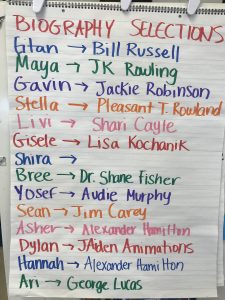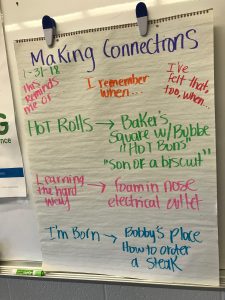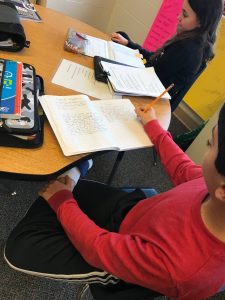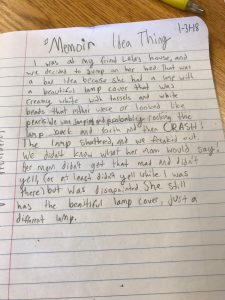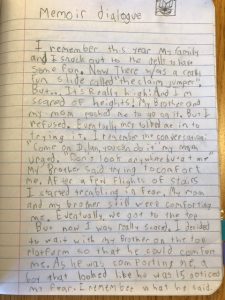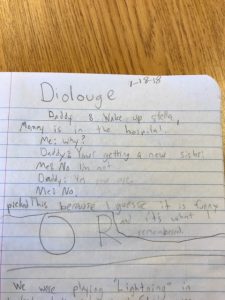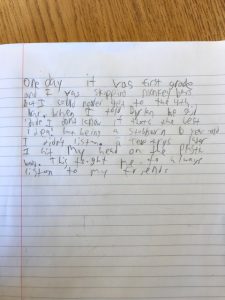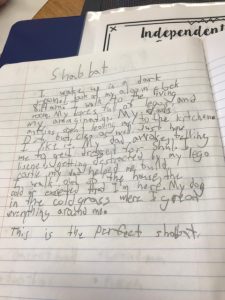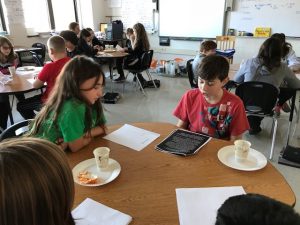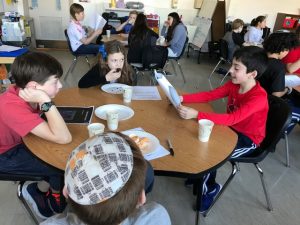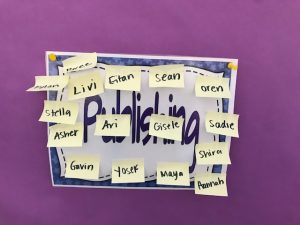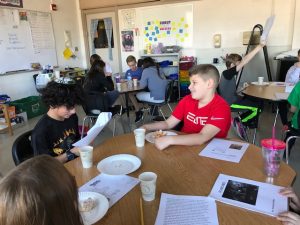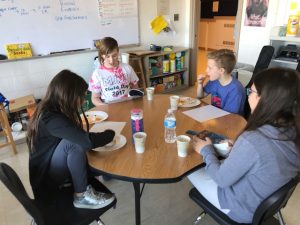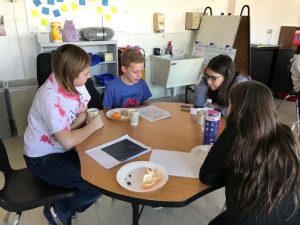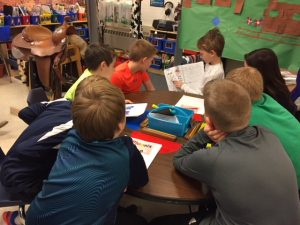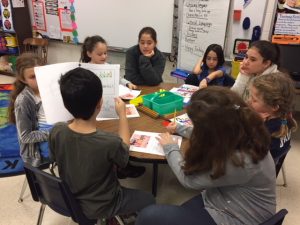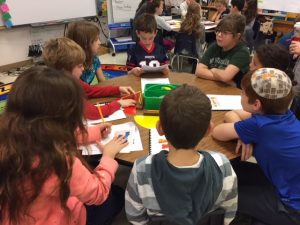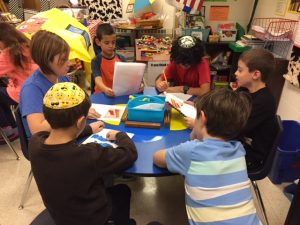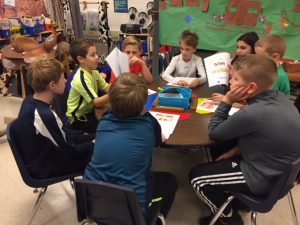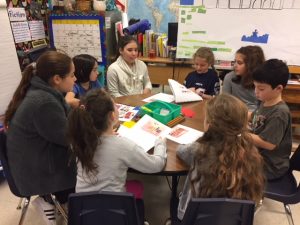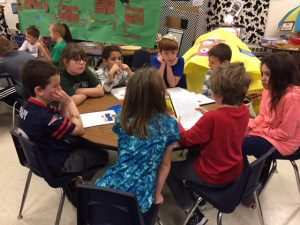Please check your child’s blog- they posted an update about biography writing today!
Category Archives: WW Updates
Biography Update
Biography is the Best Form of History
For the next few weeks, we will be studying the genre of biography in writing workshop. During this study, we will read and listen to many biographies and discuss what biographies are, including their purpose and features. This information will empower students to write their own biographies as they work through the writing process- generating ideas, collecting research, note taking, and drafting as well as revising and editing.
During the course of the study, you can support our work in the following ways:
- Talk to your child about biographies you have read;
- Ask your child questions about how the study is going;
- Help your child find inspiration by noting potential biography subjects;
- Take your child to the library and help him or her pick out great biography picture books or articles to add to our in-class collection. The picture book or article format is ideal for our study because it is short and usually filled with wonderfully detailed and well-crafted writing;
- Help your child do an online search for additional samples of good biographies; and
- Once your child has selected a subject, help him or her gather research on the internet and at the library.
As always, your help will be greatly appreciated!
Human Connections are Deeply Nurtured in the Field of Shared Story
We have moved onto the next stage of the writing process- generating ideas. In order to gather ideas for potential memoirs, I asked the kids to make personal connections to a variety of mentor texts. I modeled the expectation by sharing my own personal connections and telling stories from my childhood. It was fun to share these stories and the kids loved hearing me embarrass myself!
After the mini-lesson I asked the kids to write long about one of their ideas. The results were fun and detailed. We ended class by sharing our short, but meaningful memoirs. I am loving watching your children blossom as writers each day. We will spend the next few days generating more ideas before selecting a final idea to publish. Stay tuned!
DISCLAIMER- Please don’t forget that as we generate ideas, our focus is not on spelling and/or grammar. This will come later as we work toward publishing pieces. At this point of the writing process we just want to get our ideas down, even if it looks/sounds messy!
In true dialogue, both sides are willing to change
Memoir writers often use narrative techniques such a s dialogue and descriptions to make their stories more engaging and real. Today we read the mentor text, My Rotten Redheaded Older Brother, and discussed how the author’s use of dialogue and description helped develop the experiences and showed the relationships between the characters.
After dissecting the mentor text we tried these writing strategies on our own. I shared an example that included specific dialogue I remembered from an interaction with friends in 5th grade. I spoke about how the dialogue, or what my friend had said to me, left a lasting impression on me. The kids couldn’t believe that I remembered something from 22 years ago. It was a lesson not only in writing but also empathy. The words we choose to say can stick and impact people for a very long time! They also couldn’t believe that it had been 22 years since I was in 5th grade…I can’t either!
I asked the kids to find a comfy spot to write and to start thinking about a memory where a lot of conversation took place. In addition, I asked them to include how/why that dialogue enhanced the memory or story. Some students simply wrote their ideas (totally OK!) while others turned their dialogue into full written memoirs.
As we continue to immerse ourselves in beautifully written memoirs, I am impressed by the willingness of your children to take risks, share personal stories and the overall excitement to write!
Below are two examples of writing from today. Stay tuned for more writing to come!
Good times come and go, but the memories will last forever…
This week we have been immersing ourselves in a variety of mentor texts focusing on characteristics of memoirs. As we dipped our toes into some really wonderful writing, we were inspired to write down our own ideas that may eventually turn into published pieces of writing.
Yesterday we talked about how one word, home, might inspire us as authors of memoirs. Today we thought about memories or experiences that have left lasting impressions on us. The kids came up with wonderful lists of ideas they could write about and some students even began drafting short memoirs. I was blown away by the eagerness and effort I saw as your kiddos put pencil to paper. Even more exciting was the bravery I saw as some students volunteered to share their writing at the end of class.
Below are two awesome examples of student writing from the past week. Remember, these are just drafts–please don’t get too hung up on anything but their ideas! That is what drafting is all about! I will continue to share writing samples and I encourage you to ask your child to share his/her writing with you as well!
It’s the little moments that make life big
Today we focused on the little moments that make life big. In 5th grade it is very common for me to read through student writing and find what I like to call “bed-to-bed” stories. In this type of writing, authors tell every detail of his/her day–from the time he/she gets out of bed, to the time he/she goes to bed. For example, a student may write about a trip to Disney World and include the plane ride, the car ride, the meals, meeting the characters, etc. These stories are unfocused and usually lack vivid detail that help create an emotional experience for the reader. Instead, the student could write about the emotions he/she went through as they waited in line to ride Magic Mountain and the thrill of the roller coaster. Even though this is one tiny moment of being at Disney, the story has a clear purpose and focus that allows the student to write with greater detail.
In order to explain small moment stories, I often compare narrative writing to a watermelon. Instead of focusing on the BIG story, or the entire watermelon, zoom in on one teeny seed and describe it with great detail. We practiced this strategy today in class in preparation for our memoir unit. We wrote SUPER drafty stories that will be shared on our student blogs– some students published today. Remember, don’t worry about grammar or punctuation at this point. Our focus was writing small moments, not perfecting our grammar!
You can find my example from class below as well as an informational sheet to help you support your child’s writing at home.
And the donut just stood there with a glazed expression
Today we learned that donuts and writing go really well together! We celebrated our published writing by sharing our fictional stories/essays/personal narratives while eating donuts and clementines. Our first official published pieces are messy and imperfect. The goal of this writing piece was to learn more about ourselves as writers and to navigate the writing process. Through this piece, and smaller writing samples we have completed, each child has worked on developing different skills. Some students worked on learning more about including dialogue while others worked on including more descriptive language. This may mean that your child has perfect use of quotation marks but many spelling mistakes or vague details. I promise—this is OK! Eventually each child will add more and more tools to his/her writing toolbox to strengthen his/her writing. Ask your child about his/her writing piece and look for more writing soon! Our next unit of study will be writing memoirs, or true, personal stories.
Let’s eat grandpa.
In the process of editing and revising our work, the class realized they needed to learn more about advanced punctuation. We spent today examining sentences that used the same words but different punctuation. It became very clear to the class that punctuation really does matter! In fact, one student even said, “Whoa. My writing is going to make much more sense now!” 🙂 We will spend time over the next few weeks, and beyond, digging deeper into why each type of punctuation matters, how to use it, and how it can improve our writing.

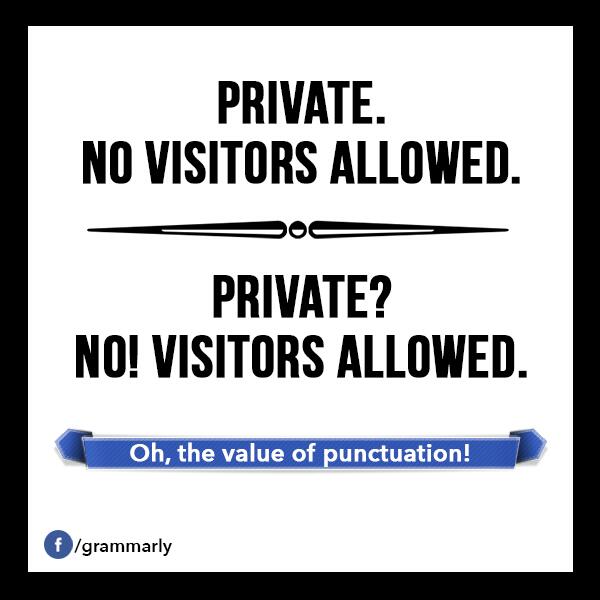
Me to We in ELA
Earlier this week we were invited to the 2nd grade publishing party. Just like 5th grade, 2nd grade (and the entire school) is working on learning the writing process and all that it entails. Attending the party was a wonderful opportunity for the 5th graders to see how writing skills develop over time. Each second grader shared his/her writing and asked the 5th graders for feedforward. I was impressed by the 5th grade’s ability to offer kind, specific and helpful feedforward. This is an important skill we have been working on in each of our classes. Even more impressive was the 5th grade’s attitude as we left the room. Everyone agreed that the 2nd grade writing was wonderful and they wondered (another core value!) how they could improve their own writing! The entire experience was the perfect opportunity to practice our rally cry for the year, moving from me to we.
Fifth grade is diligently working on their first writing pieces of the year. Most students are almost done editing and revising while a few are ready to publish. Stay tuned for finished work in the next few weeks.


